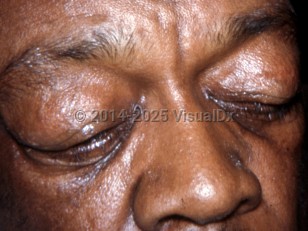Obesity hypoventilation syndrome (OHS) is a diagnosis of exclusion in obese patients with resting awake hypoventilation. Severe obesity places an increased demand on the body's ventilator mechanisms and the body attempts to meet these demands through varying compensatory mechanisms. As these compensatory mechanisms are slowly overwhelmed, OHS develops with development of chronic fatigue, chronic hypoxia and hypercapnia, and polycythemia.
In the United States, the prevalence of OHS is estimated at approximately 0.15%-0.3% and approximately 16% in patients with obstructive sleep apnea. The prevalence of OHS increases with body mass index (BMI). An estimated 50% of patients with BMI >50 kg/m2 have OHS.
Primary symptoms include daytime fatigue and respiratory obstruction, which can be evident during sleep or while awake. In children, OHS can impair daytime attention and interfere with learning as well as contribute to metabolic dysfunction.
If left untreated, OHS can lead to pulmonary hypertension and congestive heart disease. Comorbidities associated with obesity (eg, hyperlipidemia, type 2 diabetes mellitus, coronary artery disease, hypertension) are common in patients with OHS.
Obesity hypoventilation syndrome
Alerts and Notices
Important News & Links
Synopsis

Codes
ICD10CM:
E66.2 – Morbid (severe) obesity with alveolar hypoventilation
SNOMEDCT:
190966007 – Extreme obesity with alveolar hypoventilation
E66.2 – Morbid (severe) obesity with alveolar hypoventilation
SNOMEDCT:
190966007 – Extreme obesity with alveolar hypoventilation
Look For
Subscription Required
Diagnostic Pearls
Subscription Required
Differential Diagnosis & Pitfalls

To perform a comparison, select diagnoses from the classic differential
Subscription Required
Best Tests
Subscription Required
Management Pearls
Subscription Required
Therapy
Subscription Required
References
Subscription Required
Last Reviewed:03/28/2018
Last Updated:04/19/2018
Last Updated:04/19/2018
Obesity hypoventilation syndrome

